- Destinations
- Travel Styles
- About Us
- Contacts
- Destinations
- Travel Styles
- About Us
The Mekong Delta is the southern territory of Vietnam, encompassing traditions and culture. Definitely, one of its symbols is its floating markets. The floating markets are set along the numerous canals and rivers, allowing market exchanges to be executed directly from boat to boat, thus forming a vivid and colorful ambience. These floating markets offer visitors a very authentic and unique insight into local life and traditional trade.
As a tour guide, I have had the opportunity to accompany tourists to explore these floating markets over the years and observe their changes. I would like to share my experiences and practical information with you to enhance your experience. So let's start!
Founded in the early 20th century and lying only seven kilometers from the center of Can Tho City, Cai Rang Floating Market is the largest floating market in the Mekong Delta.
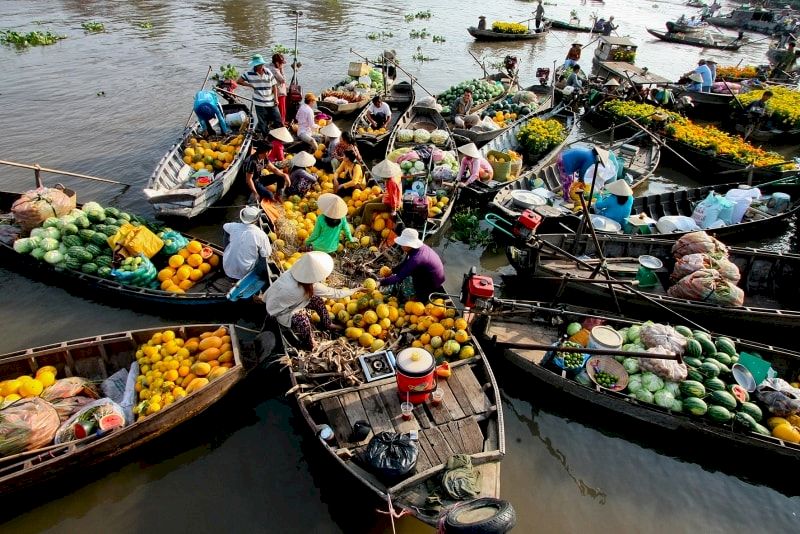
Normally from 6:30 to 9:30 a.m. daily, and especially during the Tet (Lunar New Year) season, the market becomes a hive of activity with consumers almost throughout the day, with innumerable boats loaded with flower pots in all colors and round watermelons. During the four major days of Tet, the market shuts, as all vendors return home to celebrate.
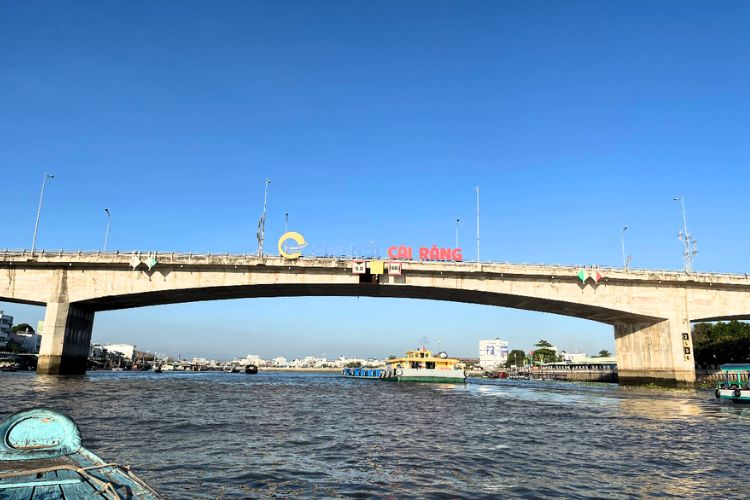
You have a chance to watch about fifty boats laden with fruits like pineapples, watermelons, grapefruit, and durian, and vegetables like sweet potatoes, cassava, and yams, all from the nearby fields in Can Tho and other delta provinces. Plus, you can try local specialties like hủ tiếu, bún mắm, bún thịt nướng, bánh mì, bánh bao, and plenty of other delicious options, all served by small boats. These boats can also serve as floating bars, and you won't be surprised if you find them serving hot black coffee, lattes, coconut water, and ice-cold drinks.
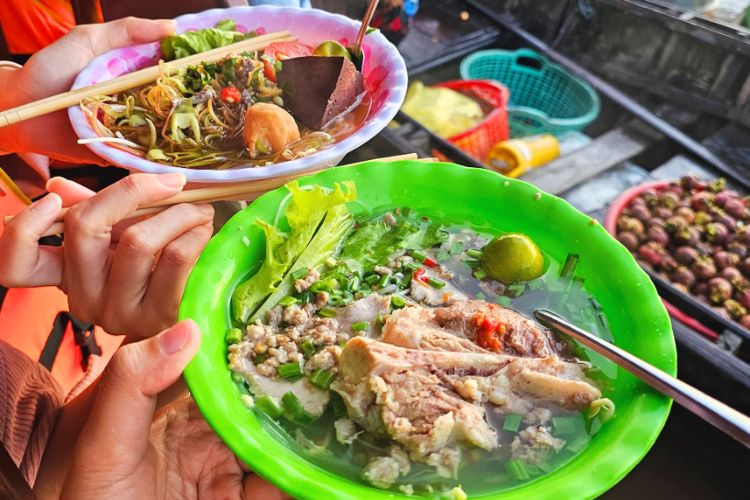
Another great option is renting a covered speedboat from Ninh Kiều Pier in the very center of town, allowing you to admire the view of the river. Alternatively, you can take a taxi to An Binh Market, which is quite close to the floating market, and rent a boat there to save time and money. The cost ranges between 15 and 40 euros, depending on the type of boat, the number of tourists, and the route.
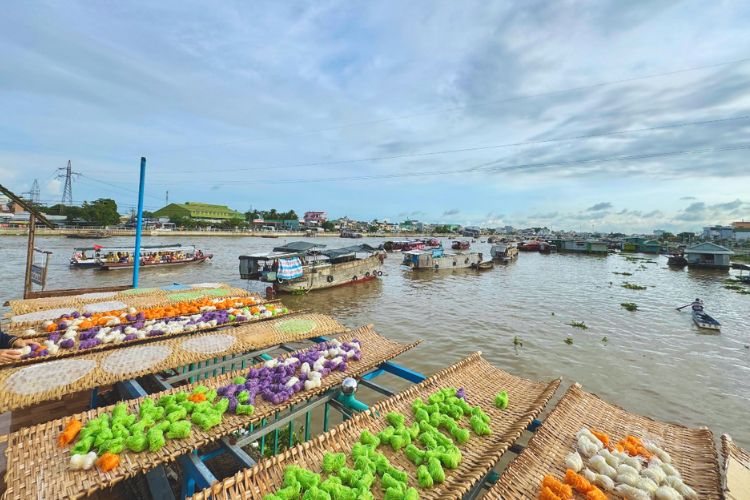
Aside from the floating markets, you can also visit places further near or in the city, like the Oriental Western house of Binh Thuy, which is famous for the movie "The Lover" and many other Vietnamese productions. The Can Tho Museum, the former provincial prison that preserves vestiges of the colonial era, along with Khmer temples and Chinese temples, are other great tourist spots to explore.
The Long Xuyen Floating Market, located on the Hau River in An Giang Province, about 4.5 driving hours from Ho Chi Minh City, is situated in the very heart of the Mekong Delta. Not as popularized as other floating markets, this place is popular in its own right as part of the experience for those in search of an original adventure.
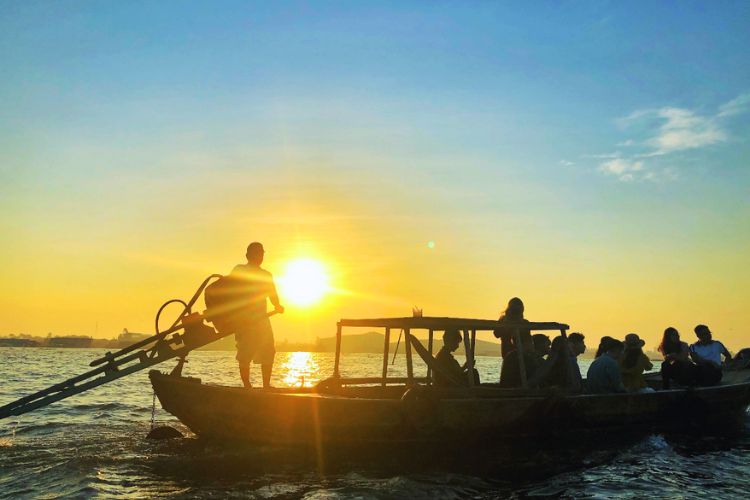
Not as crowded compared to Cai Rang, it has its own charm. If you are lucky enough to wake up at just 5:30 a.m., the time many would say this market is busy, you’ll hardly find it that way. Activities are hushed for shopping and deviate from the usual bustle of the markets.
In fact, Long Xuyen is still the second largest and most original floating market in the region. Like all other marketplaces of this type, this is also not a retail marketplace but a wholesale market. Traders from Long Xuyen City come here to acquire goods in large quantities, where traders at both the wholesale and retail levels carry out their business.
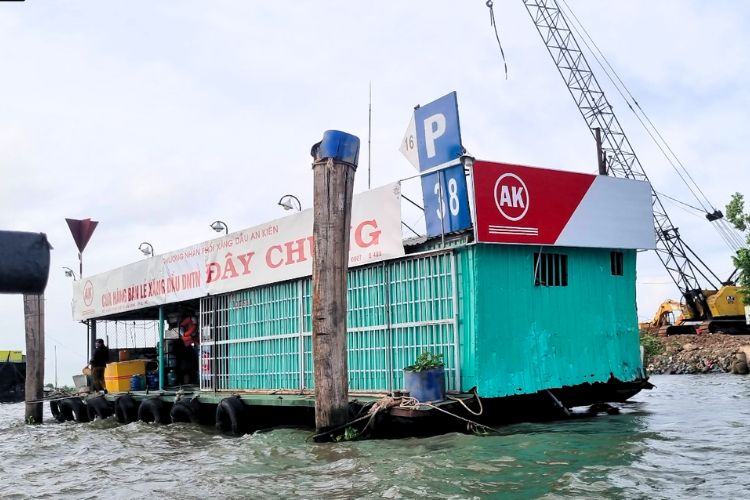
Every jar contains just one type of fruit or vegetable, such as mangoes, coconuts, watermelons, bananas, sugar cane, or even sweet potatoes and cassava. Vendors travel from boat to boat, seeking what they want, using a pole where they hang their products to sell. They will first discuss the items before bargaining, much like in many other places in Vietnam.
To explore this market, you will need to rent a small motorboat. Just go to the pier called Ô Môi, near the central market of the city. Prices vary between €12 and €20 depending on the number of tourists, the time, and the route. This will give you a close perspective of the daily life of Vietnamese people in the Mekong Delta.
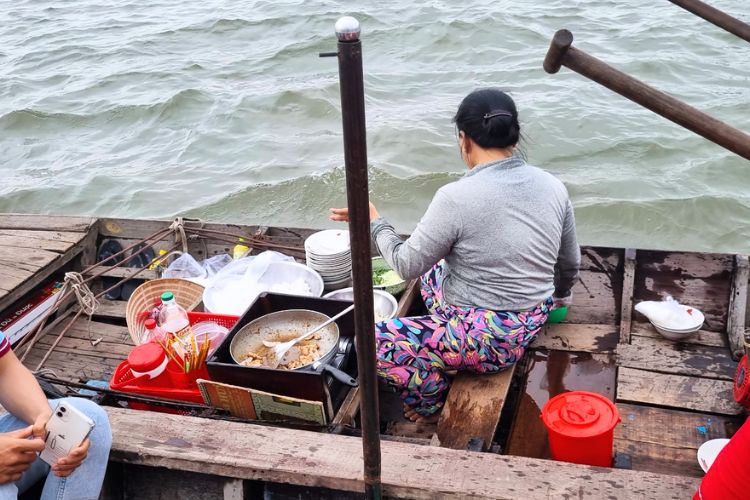
The short description I would give to this market is that it is quiet and authentic, the best place for a sunrise boat ride, where one can have breakfast on the riverside, drink coffee, and be enriched by the scenery. Typical breakfast dishes include fried noodles with meat, fish noodle soup, bun rieu, and hu tieu. If you are not interested in local food, you could bring some prepared food, like cakes, to snack on.
💡 Latest Information Update 2025:
Other floating markets, no longer so lively:
Markets that used to be open, but have now closed:
▶️ Discover the area’s highlights:
Floating markets in Vietnam have a long history intertwined with that of the waterscape of the Mekong Delta. The inhabitants of the region, in its earlier days, relied on agriculture and fishing. They soon realized that trade was possible via the waterways, which led to the birth of floating markets, trading centers along canals and rivers.
These floating markets also served as hubs for local gatherings that allowed the gossiping and passing-on of news and information among individuals, thereby strengthening a sense of community. The French colonists, however, forbade such gatherings. Hence, people had to meet very early in the morning, then disperse toward dawn. After the end of the Vietnam War, these markets arose out of necessity for the people.
The evolution of floating markets took some time: they were initially marketplaces for trade between the farmers and fishermen. Later, they evolved into commercial markets and became places for barter and trade, where merchant boats converged to sell local produce from fruits, vegetables, drinks, and even cooked food.
Famous floating markets such as Cái Răng, Phong Điền in Cần Thơ, Long Xuyên in An Giang, Ngã Bảy (Phụng Hiệp) in Hậu Giang, Ngã Năm in Sóc Trăng, Cái Bè in Tiền Giang, Trà Ôn in Vĩnh Long, have each a story to tell, with different traditions. Some specialize in certain products. Others are general traders. Some open only in the morning, others all day long.
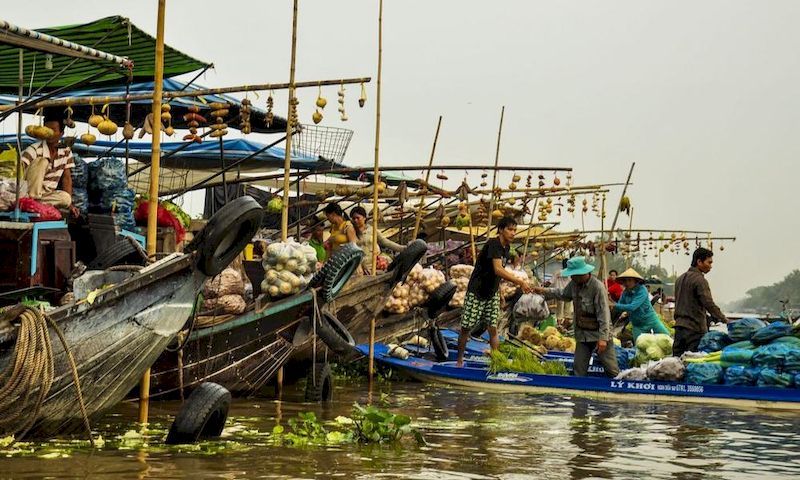
Today, floating markets are facing a range of challenges despite their cultural being. These also include competition from supermarkets and online shops. With the onset of COVID-19, there have been even greater restrictions on movement and adherence to social distancing, thus reducing the numbers gathering at floating markets and lowering local vendors' sale revenues. Consumers have now preferred alternatives and given away their chance to go to floating markets.
Preserving these iconic floating markets is a most important assignment given to the authorities, who are faced with great challenges. In this regard, many restoration and rehabilitation projects have been started. It is expected that lively scenes will return to the floating markets again.
This is quite a unique experience in southern Vietnam, particularly for visitors coming for the first time. Floating markets on the Mekong provide great exposure to real local life and enable one to see the ordinary living of Vietnamese people on the water. After once being very active and well-versed in local produce, these have become very quiet today; yet, they remain indispensable for those looking forward to experiencing the wet life of Vietnam. Therefore, never miss out on this experience but embark on an unforgettable journey along the path of the Mekong.
🚌 Recommended articles:
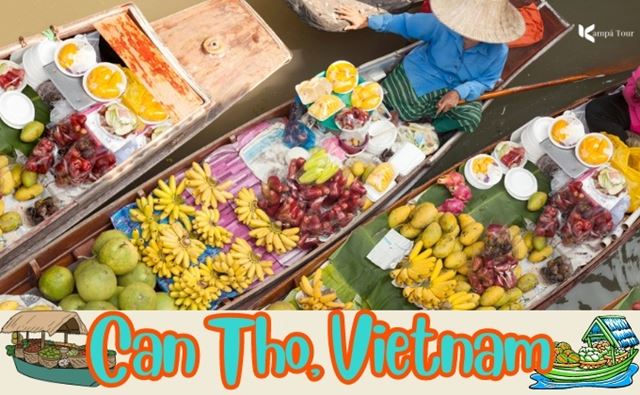
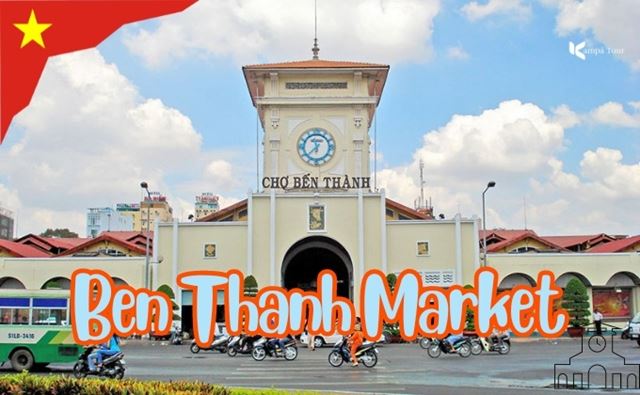
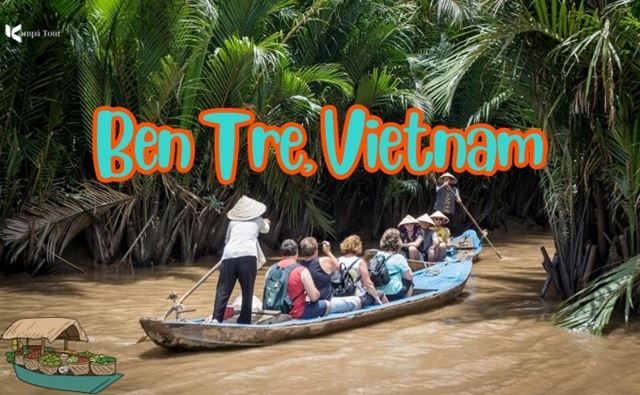
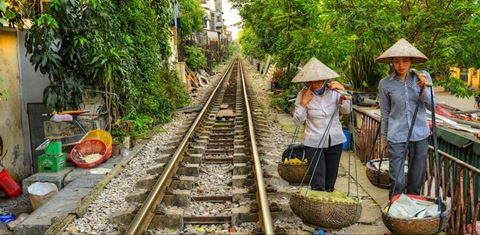 The Essentials
The Essentials The Essentials
The Essentials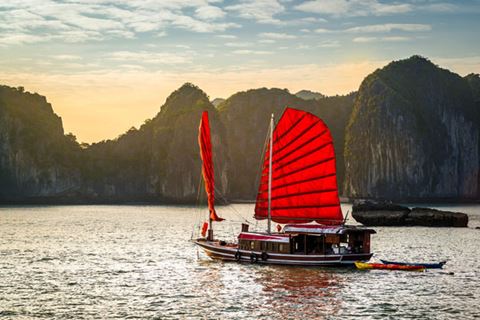 The Classic
The Classic The Classic
The Classic